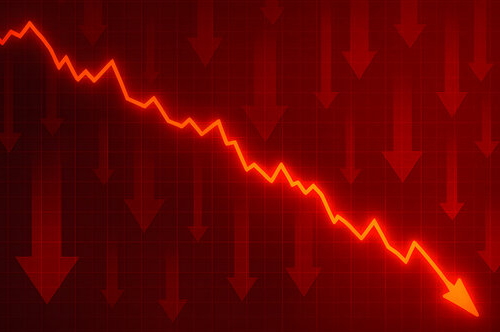The Indian stock market witnessed sharp declines as fresh US tariffs on Indian goods sent shockwaves through investor sentiment. On a volatile trading day, the Sensex slipped by nearly 600 points, while the Nifty shed around 180 points, eroding market wealth and leaving investors anxious about what lies ahead.
In this blog, we’ll break down what happened, why the markets reacted so sharply, and what it could mean for investors in the coming weeks.
Why Did Sensex and Nifty Fall?
The immediate trigger was the announcement of new tariffs by the United States on a wide range of Indian goods. Tariffs increase the cost of Indian exports, making them less competitive in the global market. This move sparked fears of a slowdown in exports, particularly in sectors heavily reliant on US markets.
Key Factors Behind the Market Slide
- US Tariffs on Indian Goods: Major blow to export-driven industries.
- Global Risk-Off Sentiment: Investors moved to safe havens like gold and US bonds.
- Rupee Depreciation: A weaker rupee added to concerns, increasing import costs.
- Selling by Foreign Institutional Investors (FIIs): Global investors pulled out funds amid trade tensions.
Impact on Major Sectors
The effect of the tariff news wasn’t uniform. Some sectors bore the brunt, while a few managed to stay resilient.
1. IT and Technology Stocks
The IT sector, often seen as a defensive bet, still saw selling pressure. Concerns over reduced outsourcing opportunities and higher scrutiny by the US hurt investor confidence.
2. Pharma and Healthcare
Pharma stocks tumbled as the US remains the largest market for Indian drug exports. With tariffs in play, margins could shrink, leading to fears of slower revenue growth.
3. Textiles and Apparel
This sector faced the hardest hit. With direct exposure to the US consumer market, tariffs could sharply dent earnings and exports, dragging down mid-cap textile counters.
4. Banking and Financials
Banks and NBFCs mirrored the broader market trend. With FIIs pulling out money, financials witnessed sharp intraday selling.
5. Energy and Metals
While energy stocks corrected, metals showed some resilience, supported by hopes of demand revival in China.
Investor Sentiment: Panic or Opportunity?
Market declines of this magnitude often trigger panic among retail investors. However, seasoned investors see such corrections as buying opportunities in quality stocks.
Short-Term Outlook
- High volatility expected in the coming days.
- Export-driven sectors may continue to face pressure.
- Investors should brace for choppy sessions as global trade tensions escalate.
Long-Term Outlook
India’s structural growth story remains intact. While tariffs pose short-term challenges, domestic consumption, government reforms, and digital transformation continue to fuel long-term growth prospects.
Global Context: Why US Tariffs Matter
The US is one of India’s largest trading partners. Any disruption in this corridor significantly impacts the Indian economy. Tariffs don’t just raise prices but also reduce demand, creating ripple effects across industries.
- Exports to the US account for nearly 17% of India’s total exports.
- Sectors like textiles, pharma, and engineering goods are most exposed.
- Tariff uncertainty may push companies to diversify their export markets.
This isn’t the first time the US has used tariffs as a tool. History shows that markets eventually adapt, but the adjustment phase often brings turbulence.
How Should Investors Respond?
Market turbulence is never easy, but having a disciplined strategy helps investors stay on course.
1. Avoid Panic Selling
Sharp corrections may tempt you to exit, but selling in panic often locks in losses.
2. Focus on Quality Stocks
Blue-chip companies with strong fundamentals tend to recover faster after global shocks.
3. Diversify Your Portfolio
Don’t put all your eggs in one basket. Spread investments across equity, debt, gold, and other asset classes.
4. Keep an Eye on the Rupee
Currency fluctuations directly impact export-heavy sectors. A depreciating rupee may offset some tariff pressure.
5. Stay Updated on Policy Moves
The Indian government may announce countermeasures or incentives to support exporters. Staying informed can help you make smarter decisions.
What This Means for the Indian Economy
Beyond the stock market, US tariffs could ripple through the broader Indian economy.
- Export Growth Slows: Exporters may face reduced demand in the US market.
- Employment Impact: Export-heavy industries like textiles could see job losses.
- Inflationary Pressures: If tariffs escalate into a larger trade war, supply chain disruptions may raise prices.
- Government Revenue: Lower exports can affect customs duty collections and overall fiscal position.
Despite these concerns, India’s domestic consumption base remains a strong buffer against external shocks.
Could This Be a Buying Opportunity?
Many experts believe that corrections often pave the way for long-term wealth creation. The key lies in identifying sectors and stocks with strong fundamentals that can weather short-term turbulence.
Sectors Worth Watching
- Banking and Finance: Strong credit growth trends continue.
- Infrastructure and Capital Goods: Government spending remains robust.
- Consumer Goods: Domestic demand remains resilient despite global headwinds.
Patience and a long-term horizon are essential for riding out short-term volatility.
Lessons From Past Market Corrections
History has shown that global trade tensions often rattle markets, but the Indian economy’s fundamentals help it bounce back. For instance:
- During the US-China trade war, Indian markets saw initial corrections but later stabilized as companies shifted supply chains.
- In past tariff episodes, Indian exporters diversified markets, reducing reliance on a single geography.
These lessons reinforce the importance of staying invested and not overreacting to short-term news flow.
Final Thoughts
The Sensex dropping 600 points and Nifty slipping 180 is a wake-up call for investors about the fragility of global trade dynamics. While US tariffs on Indian goods present a significant challenge, India’s domestic growth drivers remain intact.
For investors, the mantra should be simple: stay calm, stay diversified, and stay focused on the long term. Market volatility is temporary, but disciplined investing creates wealth over time.
For such great insights, do watch our videos on https://www.youtube.com/@Hargharcrore

